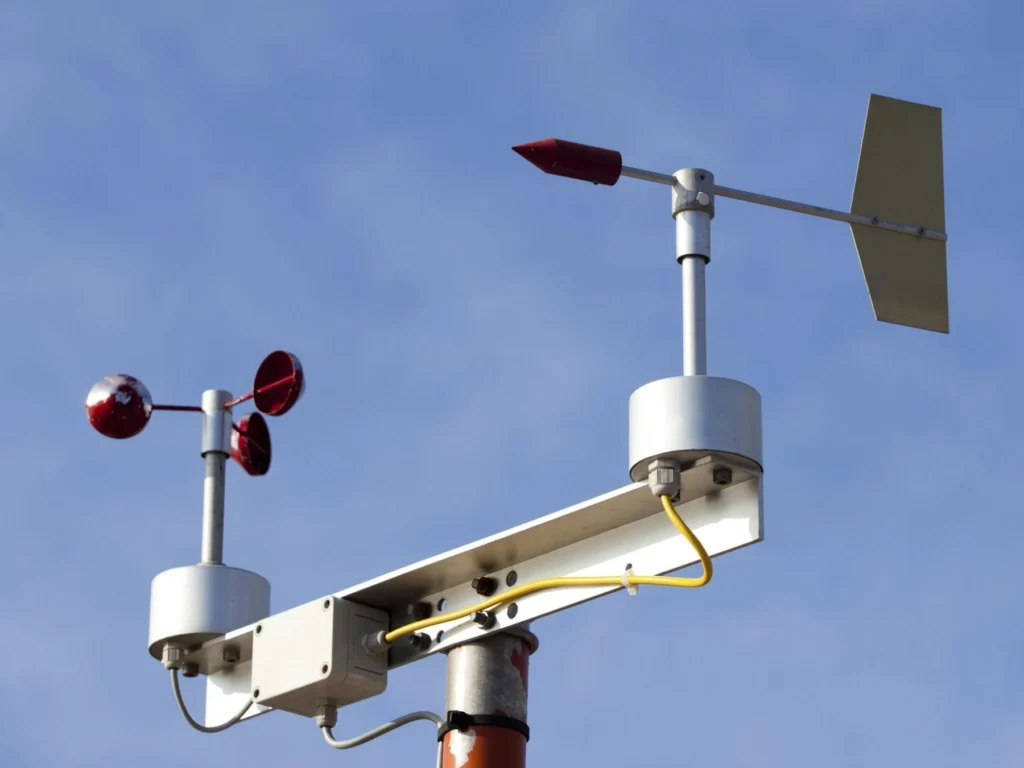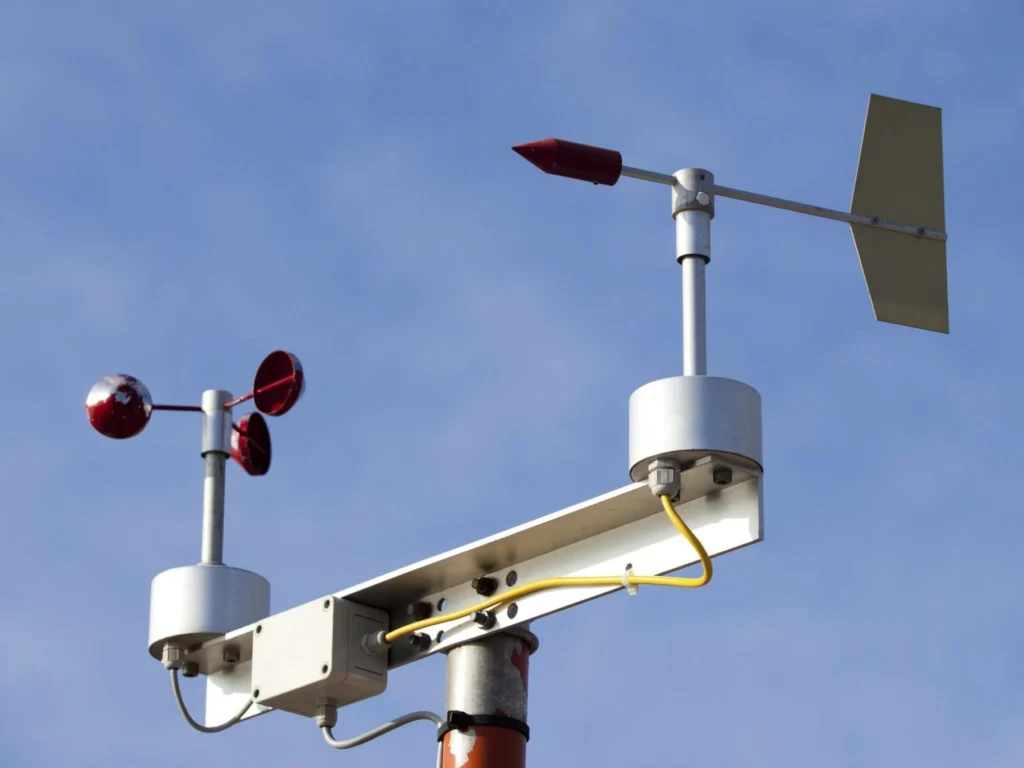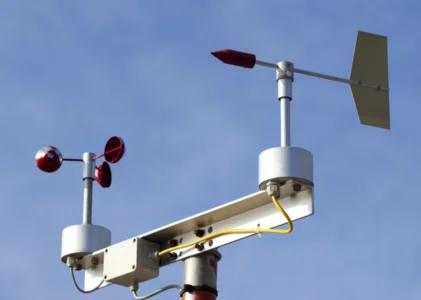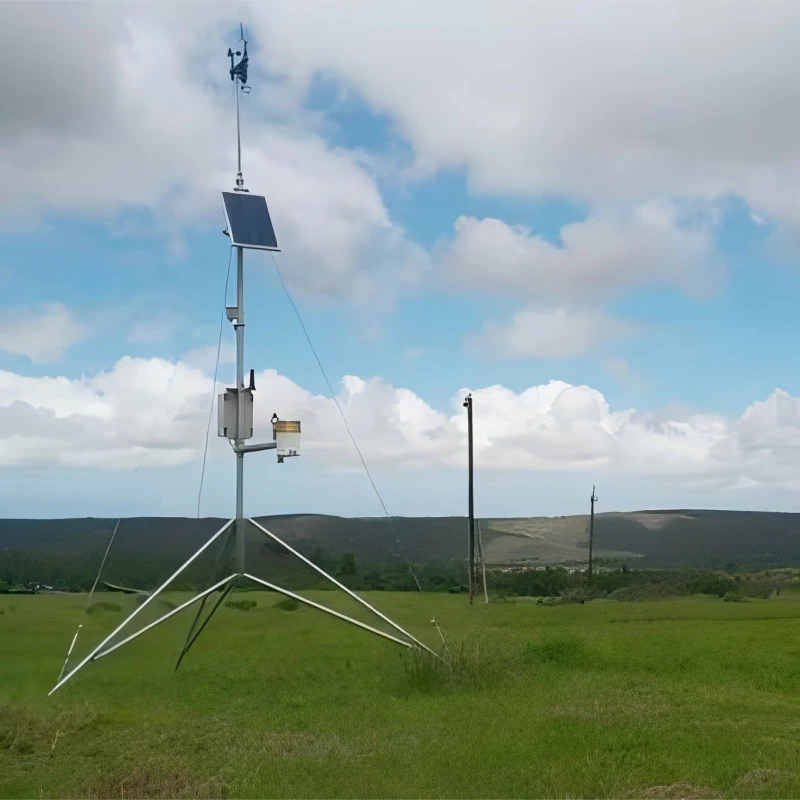
# Anemometer: The Instrument for Measuring Wind Speed
Wind speed is a critical factor in various fields, from meteorology to aviation, and even in everyday activities like sailing or kite flying. To accurately measure wind speed, scientists and enthusiasts rely on a specialized instrument known as an anemometer.
## What is an Anemometer?
An anemometer is a device designed to measure the speed of wind. It is an essential tool in weather stations, helping meteorologists predict weather patterns and assess potential risks associated with high winds. The term “anemometer” is derived from the Greek word “anemos,” meaning wind, and “metron,” meaning measure.
## Types of Anemometers
There are several types of anemometers, each with its own method of measuring wind speed:
### 1. Cup Anemometer
The cup anemometer is one of the most common types. It consists of three or four cups mounted on horizontal arms, which are attached to a vertical rod. As the wind blows, the cups rotate, and the speed of rotation is proportional to the wind speed. This rotation is then converted into a wind speed reading.
### 2. Vane Anemometer
A vane anemometer, also known as a windmill anemometer, uses a propeller or a set of blades to measure wind speed. The blades rotate when exposed to wind, and the speed of rotation is measured to determine the wind speed. This type of anemometer is often used in handheld devices for quick and easy measurements.
### 3. Hot-Wire Anemometer
The hot-wire anemometer operates on the principle of heat transfer. It consists of a thin wire heated to a constant temperature. As wind passes over the wire, it cools down, and the amount of cooling is proportional to the wind speed. This type of anemometer is highly sensitive and is often used in research and laboratory settings.
### 4. Sonic Anemometer
Sonic anemometers use ultrasonic sound waves to measure wind speed. They consist of multiple pairs of transducers that send and receive sound waves. The time it takes for the sound waves to travel between the transducers is affected by the wind speed, allowing for precise measurements. Sonic anemometers are commonly used in atmospheric research and meteorology.
## Applications of Anemometers
Anemometers have a wide range of applications across various industries:
### Meteorology
In meteorology, anemometers are used to measure wind speed and direction, which are crucial for weather forecasting. Accurate wind speed data helps predict storms, hurricanes, and other severe weather events.
### Aviation
In aviation, anemometers are used to measure wind speed and direction at airports. This information is vital for pilots during takeoff and landing, ensuring safe and efficient flight operations.
### Renewable Energy
In the renewable energy sector, anemometers are used to assess wind resources for wind farms. Accurate wind speed measurements help determine the feasibility and efficiency of wind turbines.
### Environmental Monitoring
Anemometers are also used in environmental monitoring to study wind patterns and their impact on ecosystems. This data is essential for understanding climate change and its effects on the environment.
## Conclusion
The anemometer is an indispensable tool for measuring wind speed, with applications ranging from weather forecasting to renewable energy. Whether it’s a simple cup anemometer or a sophisticated sonic anemometer, these devices provide valuable data that helps us understand and harness the power of the wind. As technology advances, anemometers continue to evolve, offering more accurate and reliable measurements for a variety of purposes.
Keyword: instrument to measure wind speed



